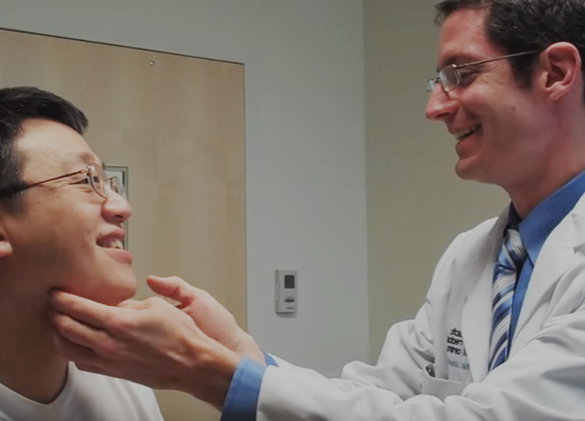Several techniques are available to slim wide, flared or thick nostrils using alar base reduction rhinoplasty.
Before we go into what goes into reducing your nostril width let's go over the anatomy of the area.
Nostril anatomy
Many people are surprised to find out that the outer portion of the nostril region (also called the ala) doesn't have any cartilage in it.

The outer alar margin and sidewall are made of fibro-fatty soft tissue. People with thicker ala don't have thicker cartilage, they just have more of this fibro-fatty tissue.
How to make the nostril or nasal base less wide with wedge (Weir) excisions
A common method to reduce the width of the nostrils is to perform a wedge excision of alar soft tissue. The schematics below shows two possible types of wedge excisions. The first maintains the inner nostril circumference:

Whereas the second includes the excision of some internal nostril skin to further reduce the nostril size. This method is used less frequently in my practice so as to avoid interrupting the natural internal vestibular curvature:

The beauty of the wedge excision technique is that the resulting scar is hidden in the natural crease that exists where the ala meet the cheek.
How to narrow the nostrils with a nasal sill excision
An additional method of reducing nostril width is to excise skin from the floor of the nostril (nasal sill). This technique is especially useful in patients with a wide nasal floor. It can also be used to treat flared nostrils. Various incision shapes can be designed including a diamond, triangle, or rectangle of tissue.
Great care must be taken in suturing the area closed. It can be harder to hide the resulting scar, though some people do have an already existing crease where the ala meet the nasal sill where an incision can be placed.

Combined Wedge excision and Nasal Sill excision to narrow the nostrils.
In some instances it is best to combine a wedge excision with nasal sill excision to appropriately narrow the nostril area. This typically occurs when significant narrowing is desired.
Management of the alar scar
The skin around the nostrils is quite oily and in some cases I recommend injecting dilute steroid in the scar to improve healing. In other cases the scar can be further minimized by performing dermabrasion (sanding) about two to three months after surgery.
In my next post I'll review some before and after nostril narrowing photos to illustrate these techniques in action. In the meantime you can checkout my rhinoplasty photo gallery here.


